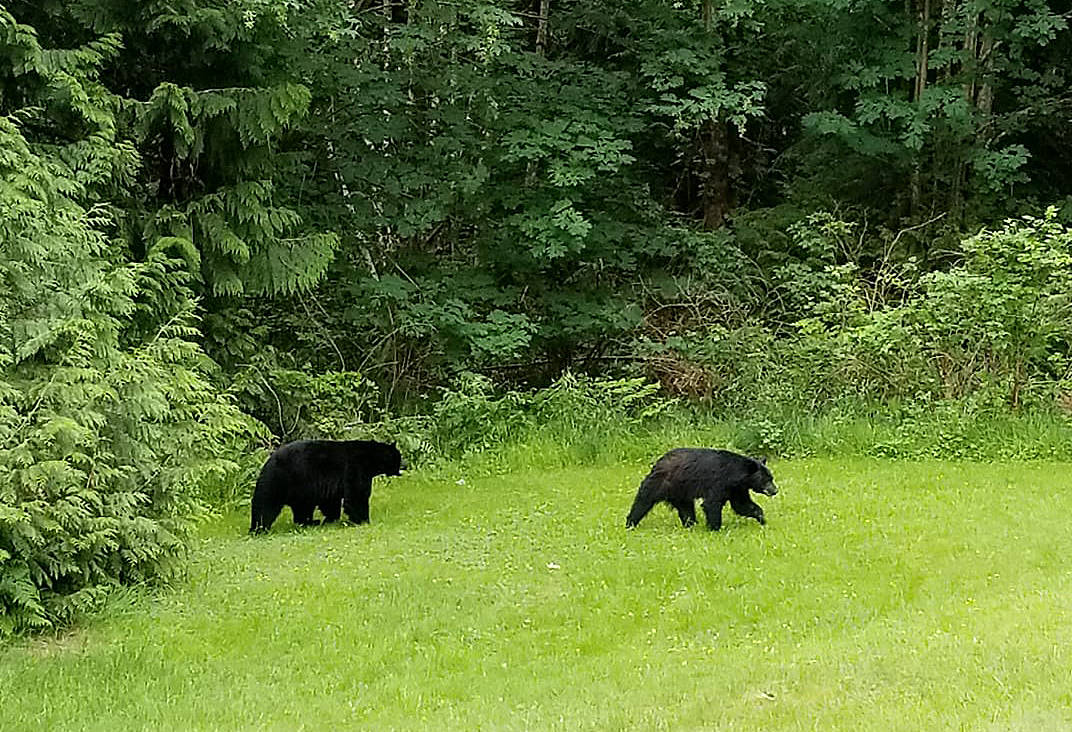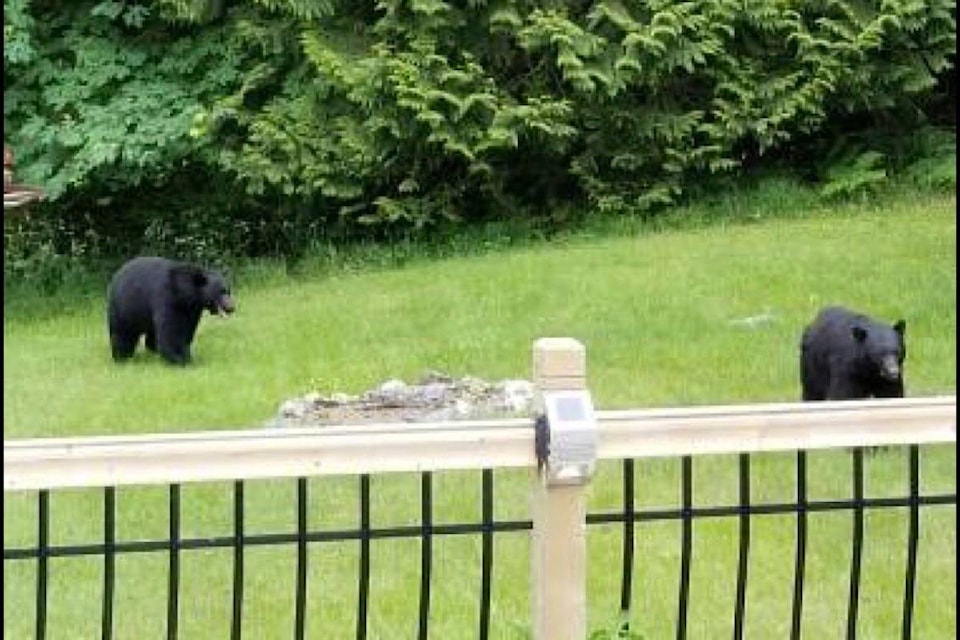It’s been two years she’s lived in the Shawnigan Lake area but this is the first time Holly Childs has had a bear encounter.
“It’s definitely scary,” she said with a chuckle. “I’m used to the cute little deer in the yard.”
The other day, however, a pair of big black bears sauntered through her property.
Childs said she’s had many walks along the trails and tracks without a sighting.
“I’m glad I got to see them in a safe environment,” she admitted. “I was curious by how loud they are walking and communicating so now I know.”
Valley Fish and Game Wilderness Watch’s Denis Martel is pointing out what many have already noticed but in this case it’s worth mentioning again.
It’s bear season. Have a look at any of the local rural community Facebook groups and you’ll see the multitude of posts of bear sightings. Shawnigan Lake, Maple Bay, Crofton, and Lake Cowichan are popular areas but that list is not at all complete.
“Bears are in heat right now,” Martel explained. “June is usually the rut.”
That means they’re out and about, hungry, and looking for mates.
The perennial problem, when bears are around, is that folks continue to leave out their trash and, as you would expect, bears tend to like a good picnic.
“People have got to stop putting their garbage out early,” Martel said. “Please don’t leave your garbage out. Only put it out on garbage day.”
Sergeant Scott Norris of the B.C. Conservation Service said it’s the duty of residents to manage their attractants.
“The Cowichan Valley is always going to have bears and the Conservation Service won’t just keep removing bears because people are not doing what they need to do,” he explained.
Garbage, pet food, compost, bird seed and the like are all attractive to bears.
Backyard chickens should live behind electric fencing, he noted, as should hobby farm sheep and goats because “bears will go after them too,” Norris noted.
“The Conservation Service doesn’t want to continue euthanizing bears because the public is not willing to do what they’ve been legislated to have to do,” he said.
Fines are $230 if you leave your garbage out and a bear is in the neighbourhood. Conservation officers will be out and knocking on doors and writing tickets. It’s better than having to shoot a bear, Norris said.
“We don’t want to have to kill bears,” he said. “It’s a public problem not a bear problem. We have to share this valley with the bears and we can coexist with bears if we do the right thing. If we don’t do the right thing bears are going to be euthanized. I don’t want to have to euthanize bears. I got into this job to protect wildlife.”
It’s not as easy as just relocating the animals Norris added. That option doesn’t always work.
Regulations mean bears are typically dropped off just 10 kilometres away from where they were picked up.
“Our experience shows that those bears usually make their way back to the same location or another town nearby because they learn that behaviour that human settlement means easy access to food,” Norris explained. “We need residents of the Cowichan Valley to know it is their duty to manage all their attractants on their property and this will prevent the needless killing of bears.”
Call The RAPP hotline at 1-877-952-7277 to report wildlife sightings, bear issues and when a neighbour leaves out trash that a bear gets into.
sarah.simpson@cowichanvalleycitizen.com
Like us on Facebook and follow us on Twitter

